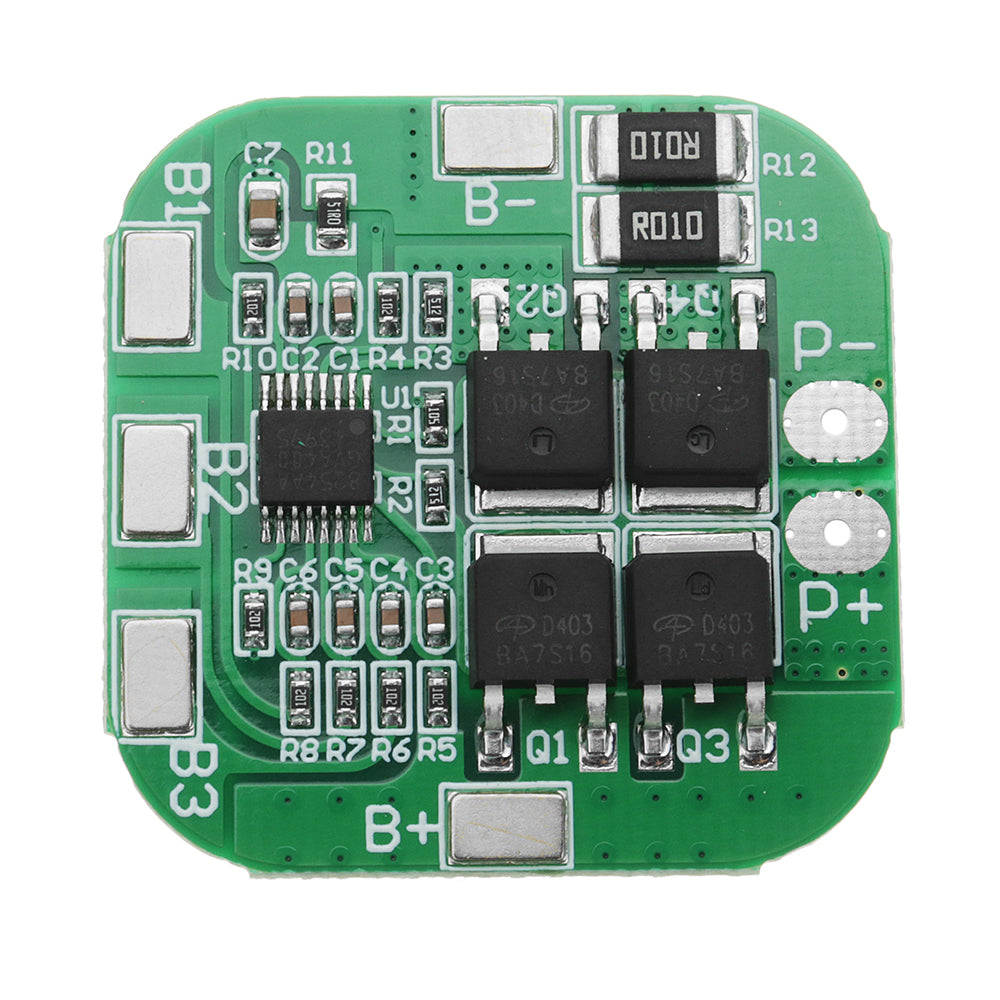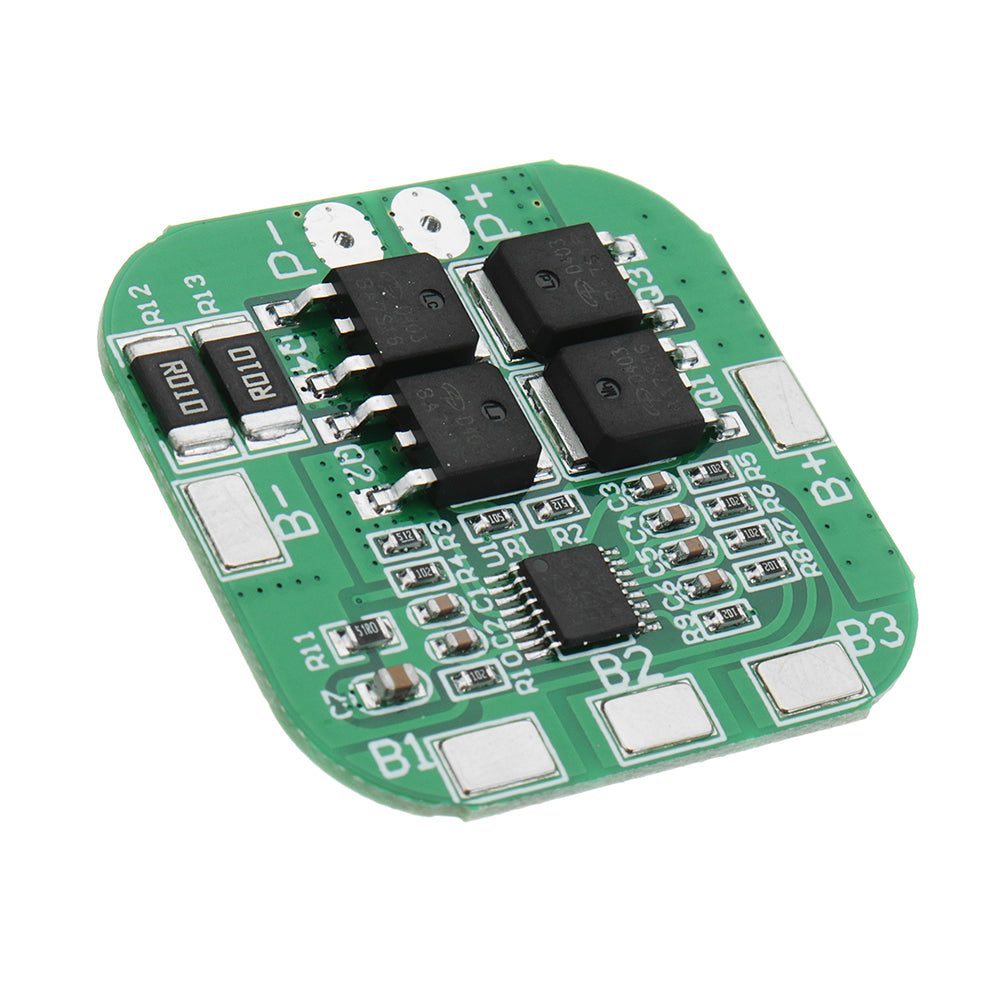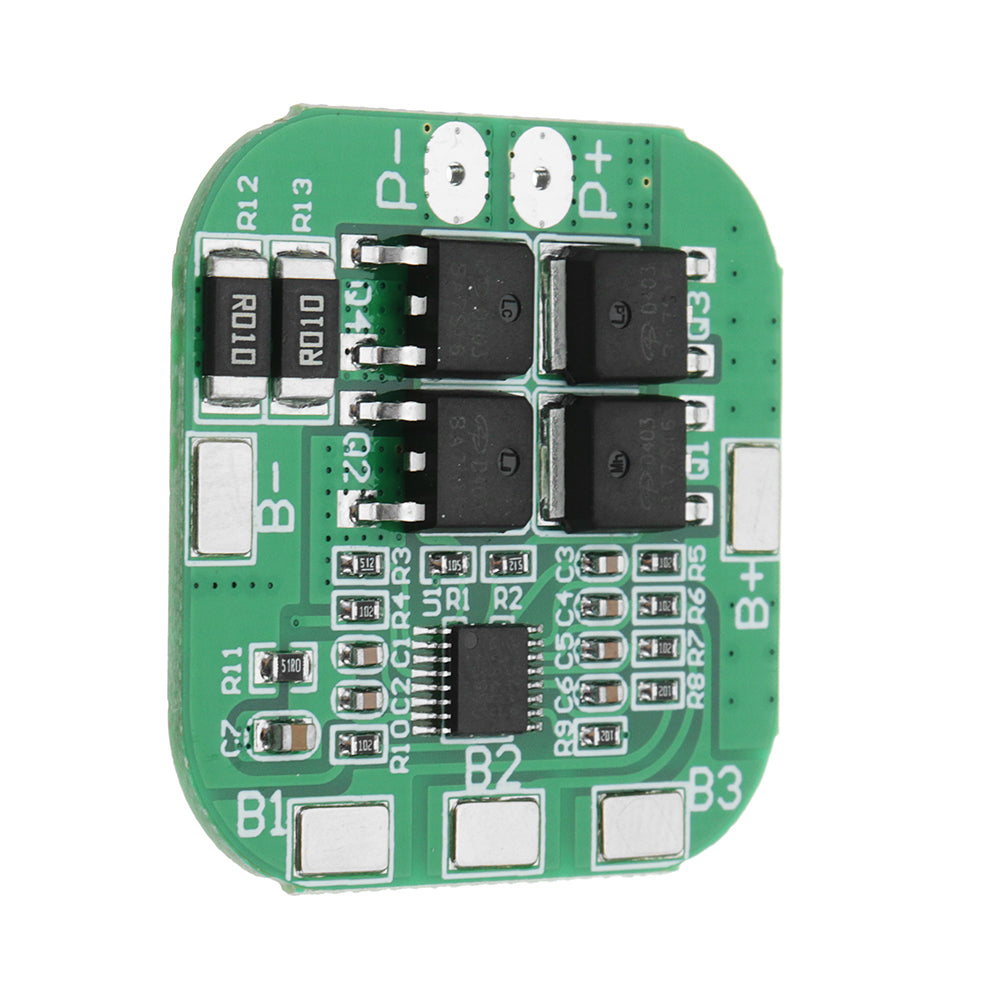Battery 4S 14.8V / 16.8V 20A BMS
Battery 4S 14.8V / 16.8V 20A BMS
QUICK SPECS:
- Hgh-accuracy voltage detection circuit;
- Terminal of the charger using high voltage device;
- Built-in three-stage over-current detection circuit (over-current 1, over-current 2, or load short circuit);
- MOS transistor can control the battery charge and discharge;
- Low standby current consumption
- 4 series 18650 battery 16.8V 16V 14.8V
- 14.8V (Li-ion 18650 or li-ion battery rated voltage)
- 16.8V (Li-ion battery full charge voltage)
- 14.4V ( Lipo battery pack rated voltage)
Applications:
- 4S Li-ion18650,LiCoO2,LiMn2O4,Li(NiCoMn)O2 rechargeable batteries
- 4S Lipo rechargeable batteries
BMS solder instruction:
- B+ connected battery positive;
- B1 the connect point between battery 1 and battery 2
- B2 connect the point between battery2 and battery 3
- B3 Connect the point between battery 3 and battery 4
- B- connect to battery negative end
- P- + connection charge / discharge positive;
- P- connection charge / discharge negative
People Also Ask:
Q1: What do we understand by Battery Management System (BMS)?
Battery management system (BMS) technology is specialized in the regulation of a battery system, which is an assembly of battery cells electrically organized in a row x column matrix arrangement to enable the delivery of a directed range of voltage and current for a specified period under expected load scenarios. A BMS's oversight usually consists of the following: battery monitoring
- Battery safety is provided
- Determining the operating state of the battery
- Battery performance is always being improved
- External devices are informed of functioning status
The name "battery" refers to the entire pack in this case; however, the measurement and management functions are applied to individual cells or groups of cells known as modules in the entire battery pack assembly. Lithium-ion reusable cells have a higher power density and are used in battery packs for a wide range of consumer products, including computers and electric vehicles.
While they function admirably, they can be harsh if used outside of a relatively narrow safe operating area (SOA), with repercussions ranging from battery performance degradation to outright danger. The BMS has a difficult job description, and its overall complexity and supervision reach may include electronic, virtual, controlling temperature, and hydraulic domains.
Q2: What is the functionality of Management Systems?
There is no one-size-fits-all set of guidelines that must be followed when it comes to battery management systems. The breadth of the technology design and the features that are incorporated are usually related to:
- The battery pack's prices, complexities, and sizes
- The battery's use, as well as any safety, longevity, or warranty considerations
- Certification requirements stem from a variety of government standards, where expenses and liabilities are high if effective safety measures aren't in place.
BMS design elements include battery pack safety management and capacity management, which are two of the most important. We'll go over how these two elements function in this section. Electrical protection, which involves not enabling the battery to be destroyed by usage outside its SOA, and temperature control, which entails passive and/or active temperature regulation to keep or bring the pack into its SOA, are the two main areas of battery pack protection management.
Q3: Do I need to connect any cell boards concerning the BMS unit?
No. The main BMS unit is where everything is kept. From the battery pack to the central BMS, one wire is usually attached per cell (with one ground wire for each group of 12 cells).
Q4: Could you tell me a little bit about the current sensors you recommend as an add-on?
LEM's automotive-grade current sensors are used with the Orion BMS. The present sensors were chosen for their precision and consistency across the whole vehicle temperature range. Each voltage measurement module comprises two separate current sensors, one smaller and the other larger. This is used to greatly improve accuracy at lower currents, where high electrical sensors are notoriously inaccurate. The BMS also compares the two sensor data to detect present sensor faults.
Battery 4S 14.8V / 16.8V 20A BMS
Battery 4S 14.8V / 16.8V 20A BMS
Low stock: 3 left
Product Code
SKU:AM361
Regular price
₱ 75.00
Regular price
Sale price
₱ 75.00
Unit price
per
Couldn't load pickup availability






